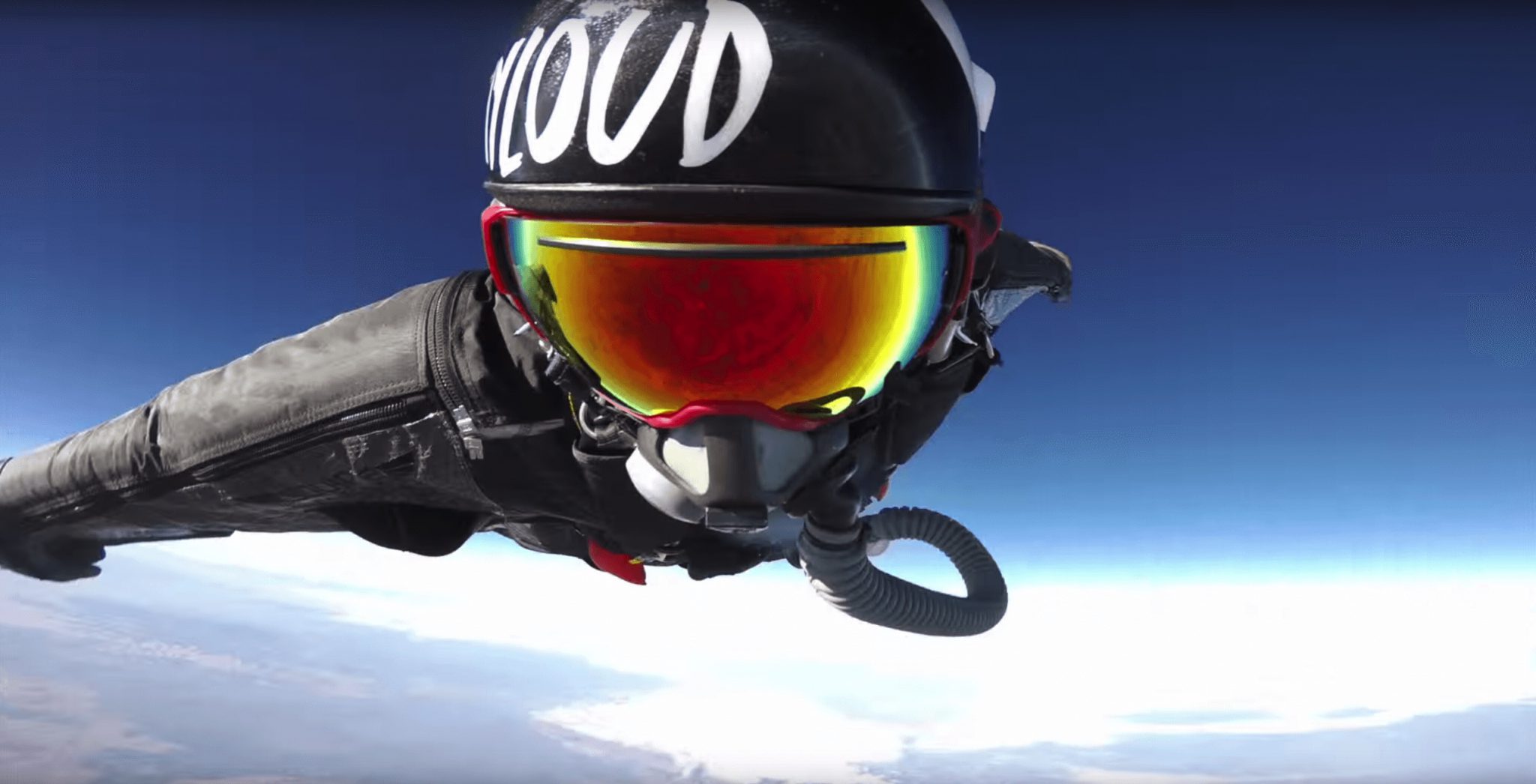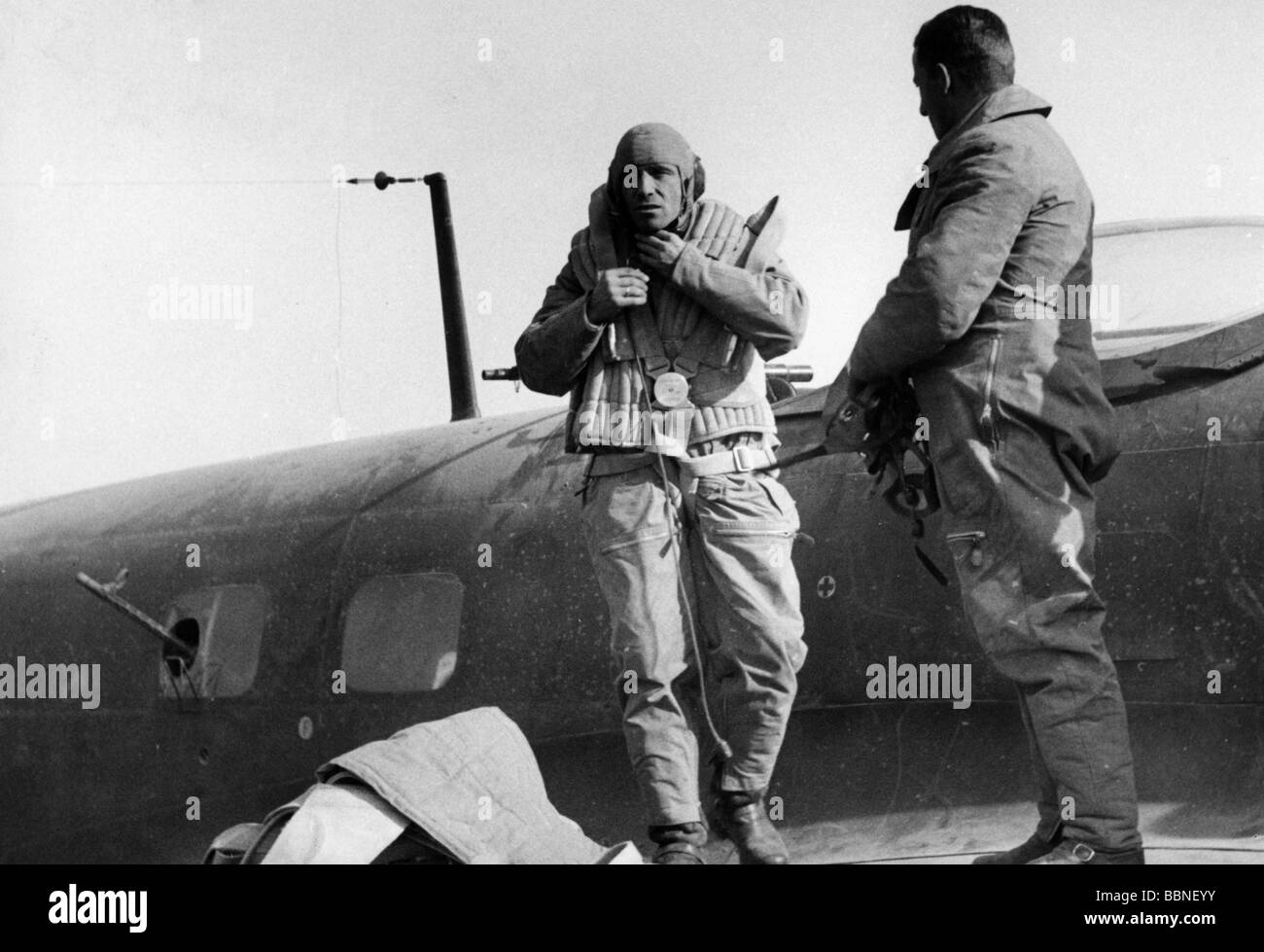Military Wingsuit - Wingsuit flying (or wingsuiting) is the sport of skydiving using a sleeved, strapped suit called a wingsuit to add surface area to the diver's body and increase lift, allowing for greater gliding time rather than just free falling. The modern wingsuit, first developed in the late 1990s, uses a pair of fabric membranes stretched between the arms and flanks/thighs to mimic an airfoil, and often also between the legs to act as a tail and allow for some aerial direction.
Like all skydiving disciplines, a wingsuit flight is almost always done by deploying a parachute, and therefore a wingsuit can be flown from any point that provides sufficient height for both flight and parachute deployment - an airplane launch point or BASE-jump starting point, such as a high cliff or mountain top. The wingsuit floor carries specially designed parachute equipment for skydiving or BASE jumping. While parachute flight is normal, the canopy pilot must spread the wings (after release) to reach the direction parachute switches and control the path of descent.
Military Wingsuit

The jumpsuits are sometimes called "birdman suits" (after the brand name of the makers of the first commercial jumpsuit), "squirrel suits" (for their resemblance to the wing membranes of flying squirrels), and " bat suits" (because of their resemblance to bat wings or perhaps the comic book superhero battle suit).
Portuguese Air Force Trains Air And Ground Crews For Joint Interoperability
On February 4, 1912, one of the first attempts to fly a flight suit was made by a 33-year-old tailor, Franz Reichelt, who jumped from the Eiffel Tower to test his invention of a combination parachute and wing, which was similar to modern wingsuits. He deceived the guards by saying that the experiment would be done with a dummy. He hesitated for quite some time before jumping and died when he hit the ground headfirst, opening a measurable hole in the frozen ground.
A wingsuit was first used in the United States in 1930 by a 19-year-old American, Rex G Finney, of Los Angeles, California. The aim was to increase horizontal movement and maneuverability during a parachute jump.
These early wingsuits used materials such as canvas, wood, silk, steel and whalebone. They were not very reliable, although some "rat-birds", such as Clem Sohn and Leo Valtin, claimed to have glided for miles.
Batwings, a precursor to wingsuits, were featured in the 1969 film The Gypsy Moths, starring Burt Lancaster and Ge Hackman.
The Excruciating, 200 Mph World Of Wingsuit Racing
In the mid-1990s, the modern wingsuit was developed by Frenchman Patrick de Gayardon, adapted from the model used by John Carta. In 1997, Bulgarian Sammy Popov designed and built a wingsuit that had a larger wing between the legs and longer wings on the arms. He tested his prototype in a vertical wind tunnel in Las Vegas on the Flyaway Las Vegas. Popov's wingsuit first flew in October 1998 but never entered commercial production. In 1998, Chuck "Da Kine" Priest' built a version that included hard ribs on the wings of the wings. While these stiffer wings could hold their shape better in flight, it made the wingsuit heavier and more difficult to fly. Raggs' design was also never in commercial production. Popov and Raggs, flying together for the first time, displayed their designs side-by-side at the World Freefall Convention in Quincy, Illinois, in August 1999. Both designs performed well. At the same event, the jumpers went wingsuit skydiving in formation with the suits of Gayardon, Popov and Ragg.
In 1999, Finland's Jari Kuosma and Croatia's Robert Pečnik worked together to create a wingsuit that was safe and affordable for all skydivers. Kuosma founded Bird-Man International Ltd. In the same year. BirdMan's "Classic", designed by Pečnik, was the first wingsuit offered to the general skydiving public. BirdMan was the first manufacturer to develop an instructor program.
Created by Kuosma, the goal of the instructor program was to remove the stigma that wingsuits were dangerous and give wingsuit beginners (usually skydivers with a minimum of 200 jumps) a way to safely enjoy what was once considered performance. most dangerous in the world. skydiving world. With the help of Birdman instructors Scott Campos, Chuck Blue and Kim Griffin, a standardized instructional program was developed that prepares the instructors.

Wingsuit manufacturers Squirrel Wingsuits, TonySuits Wingsuits, Phoix-Fly, Fly Your Body, and Nitro Rigging have also instituted trainer training programs.
How To Get The Wingsuit In Far Cry 6
A wingsuit pilot performs a free fall with wingsuit equipment and a parachute. The details of a wingsuit launch depend on whether it is a parachute from an airplane or a BASE jump from a solid object.
Exiting a plane in a wingsuit requires skills that vary depending on the location and size of the door. These techniques include orientation relative to the aircraft and airflow during exit. It is also important for wingsuit pilots to spread their legs and arms at just the right moment to avoid hitting the tail or becoming unstable. The wingsuit starts flying immediately after leaving the aircraft in the relative wind generated by the aircraft's forward speed.
Exiting a BASE jump location, such as a cliff, requires a different technique. In these situations, a vertical drop with the forces of gravity creates the airspeed that wingsuits need to generate lift. This is also the case when exiting a helicopter, paraglider or hot air balloon. Unlike exiting a plane, it takes time to build up airspeed to inflate the wingsuit and provide aerodynamic control. So getting off the cliff in a proper orientation is critical.
A wingsuit changes the area of the body exposed to the wind to increase the desired amount of lift and drag across the body. With training, wingsuit pilots can achieve a sustained glide ratio of 3:1 or more.
Wing Suit Flying Stock Photos
This means that for every meter you fall, three meters advance. By adjusting their body configuration, fliers can change their forward speed and rate of descent. The pilot manipulates these flight characteristics by altering the shape of the fuselage, unclogging and rolling the shoulders and moving the hips and knees, and altering the angle of attack at which the wingsuit flies in the relative wind, and by the amount of action applied to the fabric wings. of the suit. The lack of a vertical stabilization surface results in little damping around the yaw axis, so poor flying technique can result in a spin that requires active effort on the part of the jumper to stop.
The terminal velocity of a typical skydiver in belly-to-earth orientation ranges from 180 to 225 km/h (110 to 140 mph). A wingsuit can drastically reduce these speeds. An instantaneous vertical speed of 40 km/h (25 mph) is recorded.
However, the speed at which the body moves through the air is still much higher (up to 100 km/h [62 mph]).

The glide ratios of older wingsuits made in the 1990s through the early 2010s were closer to 2:1.
Free Download Displaying 17 Images For Military Wingsuit Wallpaper [1280x1024] For Your Desktop, Mobile & Tablet
But that was very difficult. However, advances in modern wingsuits allow flyers to achieve a 3:1 ratio much more easily, allowing for higher speeds.
Wingsuits can perform a flare where airspeed is traded for additional lift. By diving first to build up speed, modern wingsuits can boost enough to gain altitude, but only for a short period of time.
At a planned height above the ground where a paratrooper or BASE jumper would normally open the parachute, wingsuit pilots would also open their parachutes. Prior to deployment, pilots adjust their flight setting by flaring to reduce their airspeed. The pilot reaches back and launches a little pilot starting with the parachute opening sequence.
The parachute is released for a controlled landing at the desired landing location using typical skydiving or BASE jumping techniques.
Wingsuit Flying Hi Res Stock Photography And Images
Wingsuit pilots often use tools, including handheld GPS receivers, to record their flight path. This data can be further analyzed to assess flight performance in terms of rate of descent, speed and glide ratio. When jumping for the first time in a new location, BASE jumpers often assess the terrain with the help of maps and laser rangefinders. By comparing a known terrain profile with previously recorded flight data, jumpers can objectively assess whether a given jump is possible.
BASE jumpers also use benchmarks, along with recorded video of their flight, to determine their performance relative to previous flights and the flights of other BASE jumpers at the same location.
Modern wingsuits use a combination of materials to create an airfoil shape. The main surface is typically made from ripstop nylon, with different materials used to strengthen the leading edge and reduce drag.

Beginner wingsuits have less surface area and lower internal pressure. This makes them easier to control and less likely to become unstable in flight. Less dust material makes it easier to deploy the little pilot in the d of flight. With experience, pilots can choose to upgrade to more advanced suits that have more surface area and greater glide performance.
Wingsuit Gear: 6 Super Wacky Outfits
The shape of the airfoil is formed by the pressure inside the wing and the construction of the suit. Internal ribbing helps mold the shape. Having a smooth leading edge is especially important, as it is the source of most lift and drag. Reducing entry drag while maintaining high internal suit pressure is also important in modern wingsuit design. The number
Wingsuit, learn wingsuit, tandem wingsuit, wingsuit flying, military wingsuit flying, wingsuit price, wingsuit suit, wingsuit gliding, wingsuit training, wingsuit skydiving, wingsuit experience, wingsuit military application
0 Comments